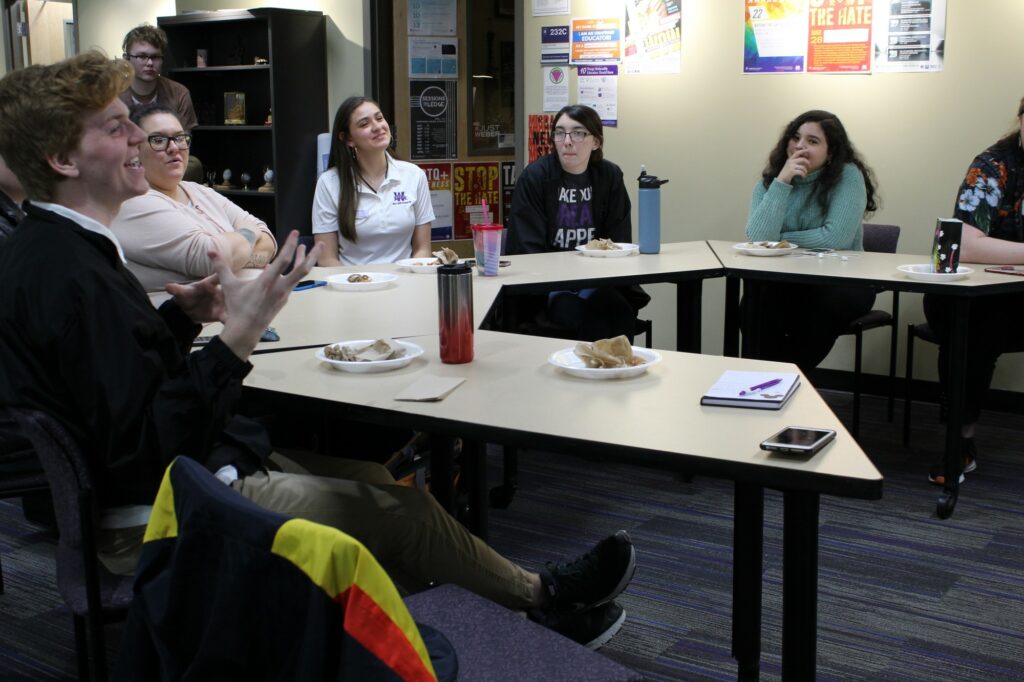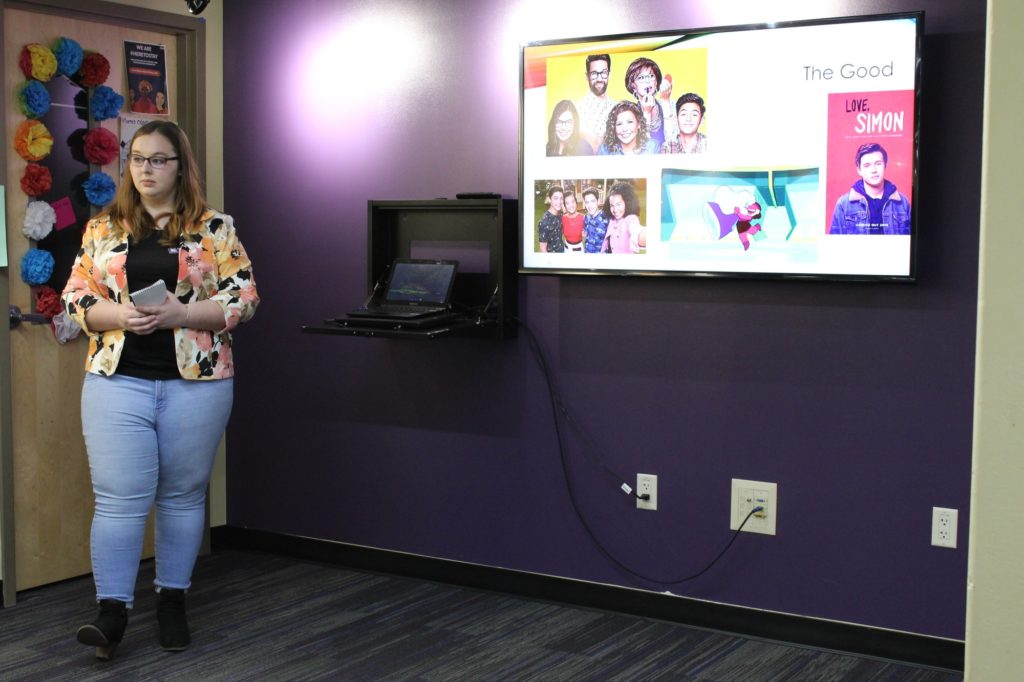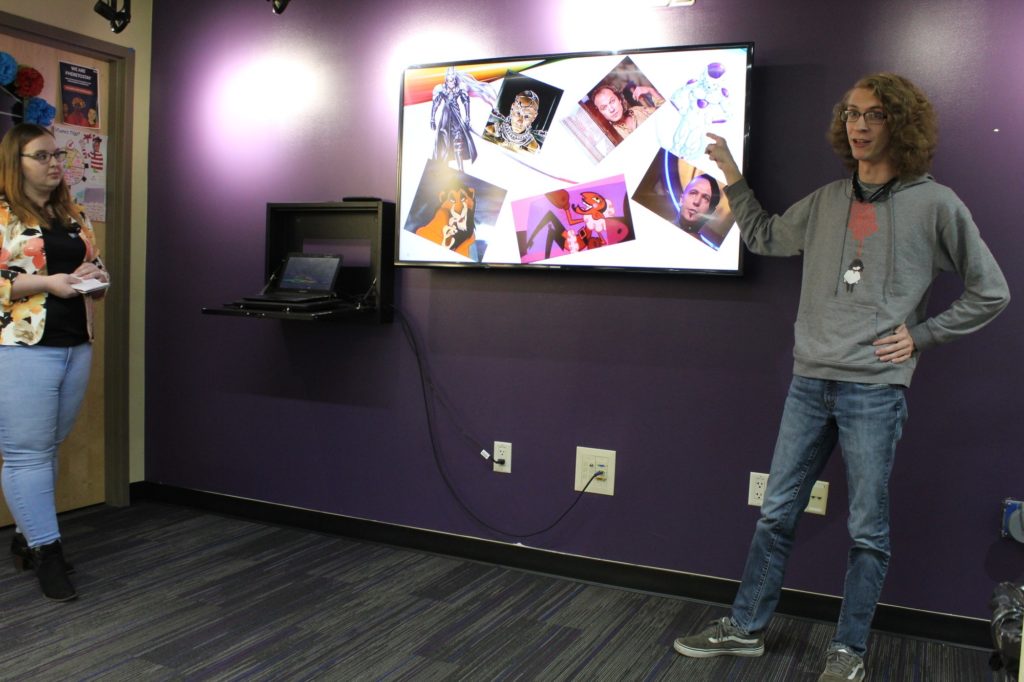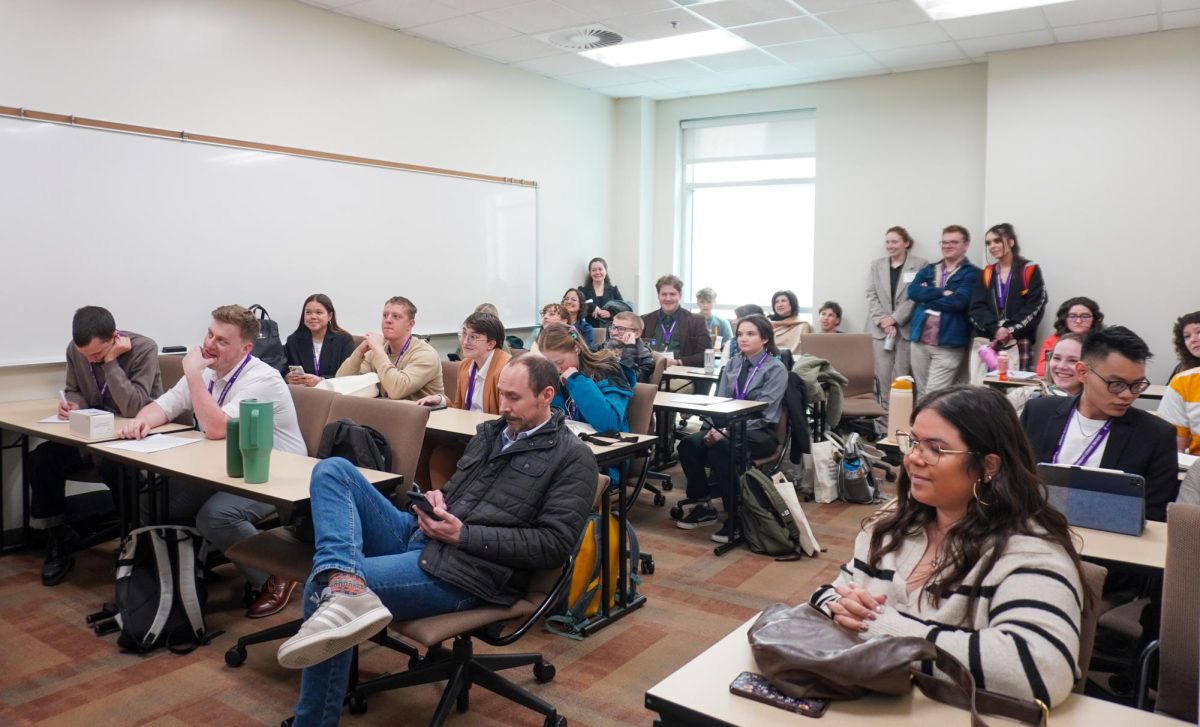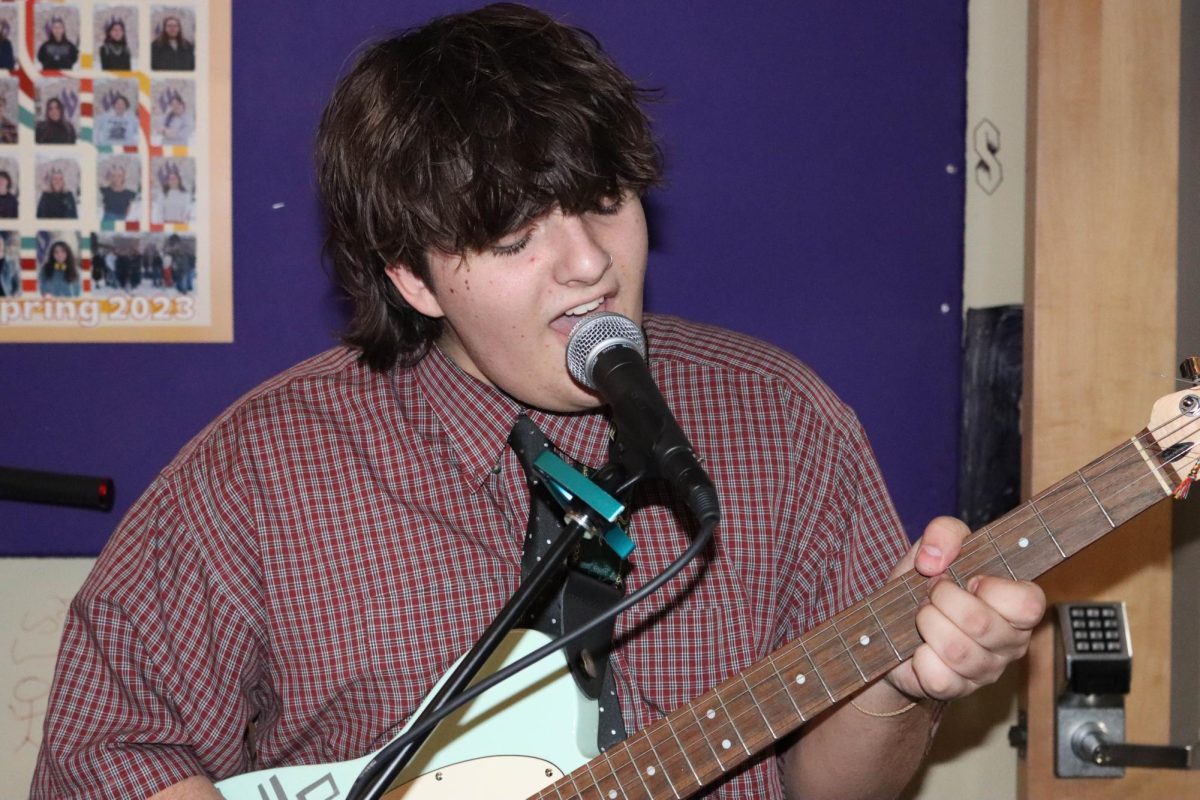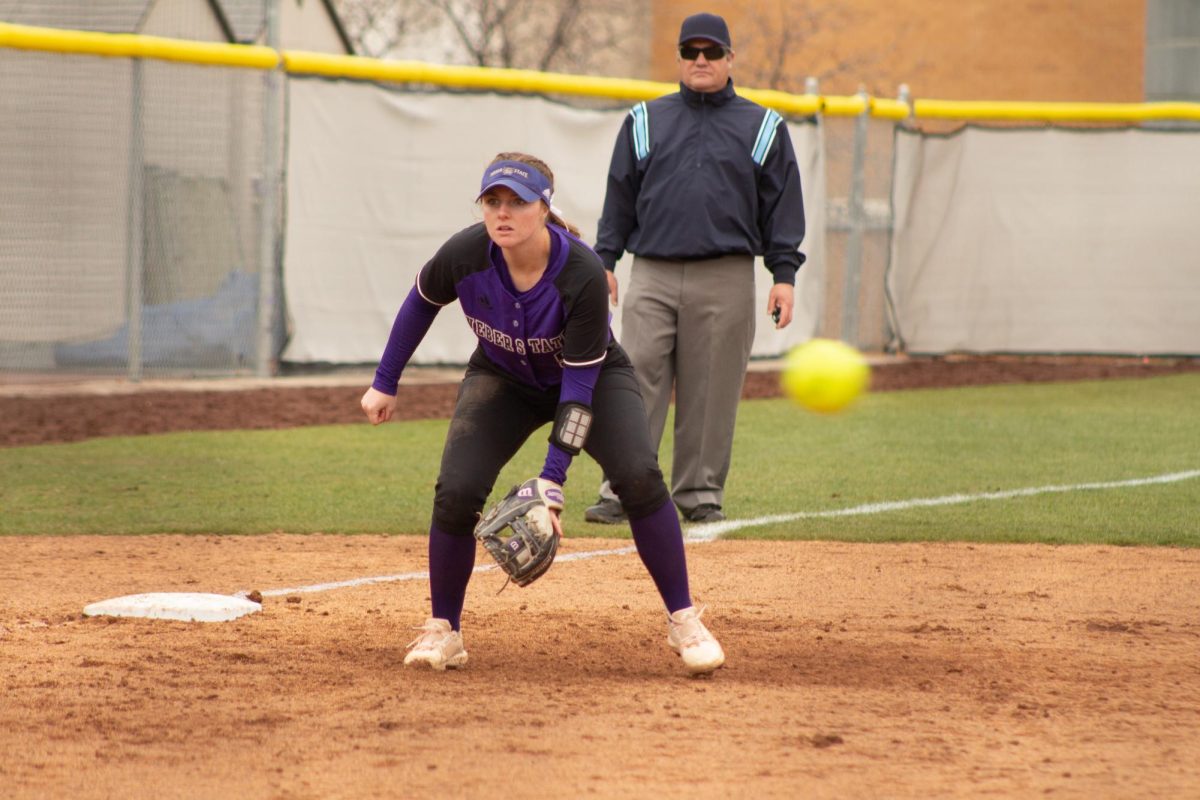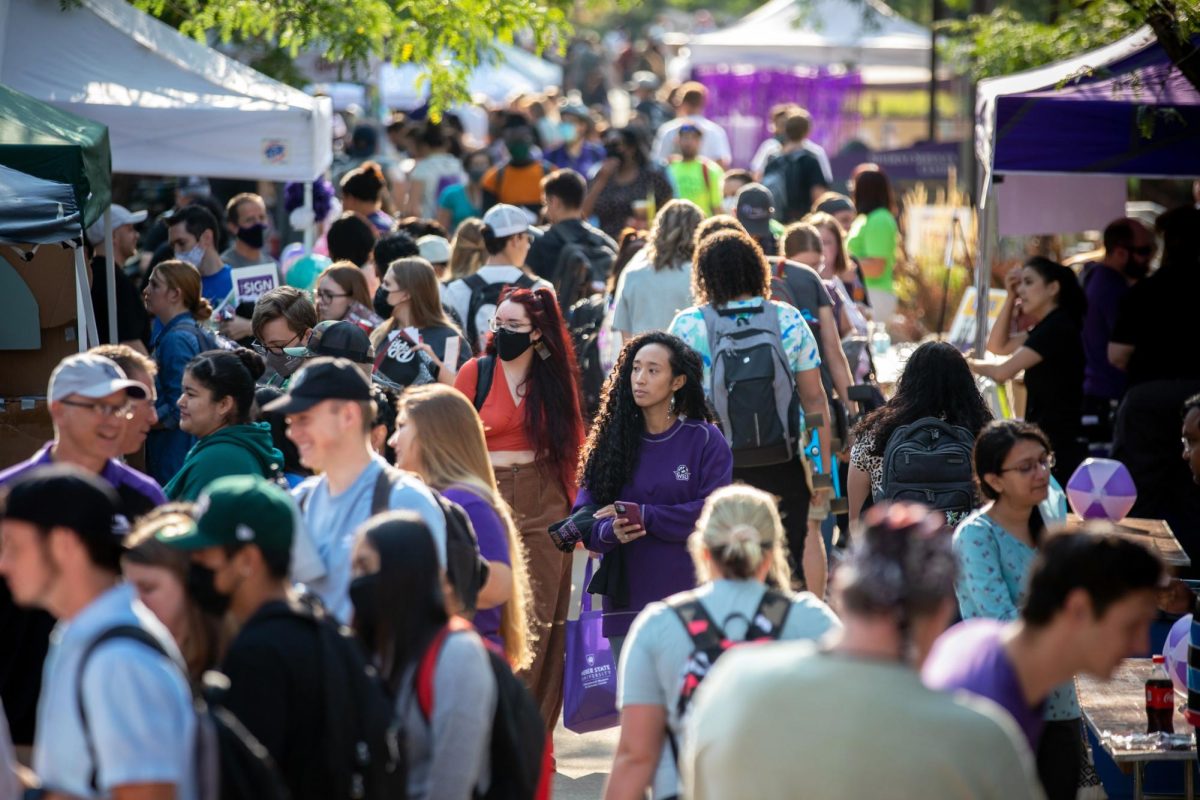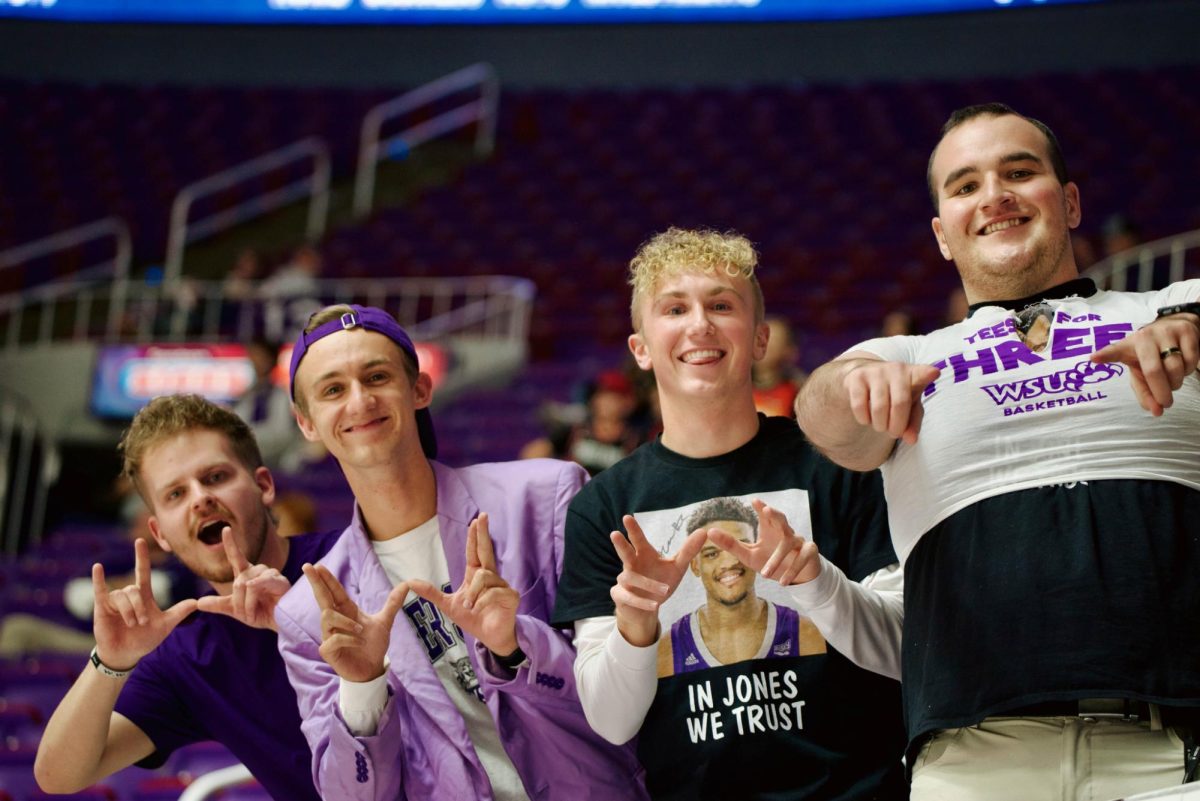The gay best friend character is a narrative often used in today’s media. WSU LGBTQ Awareness Chair, Savannah Deichmann, educated students and community members about the history of LGBT stereotypes in film and television, helping attendees acknowledge the differences between good and bad representation.
Some character examples in movies include Damian Leigh in “Mean Girls” and Christian Stovitz in “Clueless.”
According to Deichmann, the way media portrays these characters is through humor. They are often the friend a straight girl would go to for relationship or fashion advice. However, these characters are portrayed as having messy relationships, with little to no love life.
“They are not usually seen as an actual character, but more of a prop for the female lead to have along with them,” Deichmann said.
In 1984, the first notable gay best friend in modern cinema was introduced in Buddy from “The Woman in Red.” Buddy’s main purpose was to help the lady in red retrieve the dress, having no substantial role besides being a supporting character.
Today, films that include the gay best friend role have not evolved as progressively as the rest of society. Leigh’s storyline in “Mean Girls” does not go outside of comedic relief. The audience never sees Damien’s home or love life.
“He is one of the most popular gay best friends in modern day, but his character obtains many of these same stereotypes, such as giving his girl friends advice and being on the more feminine side,” Deichmann said.
There are recent positive representations of the LGBT community in the media.
The modern-day television show “One Day at a Time” highlights topics about gender identity, peer pressure and sexual harassment. One of the main characters, Elena Alvarez, comes out as lesbian.
Andrea Hernández, diversity and inclusive programs specialist, said “‘One Day at a Time’ shows a family who has a queer member among them, the aunt, but they do not acknowledge that part of her life.”
“Elena’s family members wouldn’t talk about her tía being a lesbian and neither would her tía,” Hernández said. “Elena wanted to out her tía because she wanted her to feel free, but her tía thought, ‘it is what it is.’ It’s a different generational thought.”
Another modern-day television show that tackles taboo topics is “Andi Mack,” the first Disney Channel show to include an openly gay character.
“The show displays the importance in protesting, being comfortable with identities and being a spokesperson for this generation,” Deichmann said.
Members of the LGBT community often feel the media does not portray LGBT characters in positive ways. According to WSU student Kay Walker, some villains have been closely tied to queer narratives.
“Characters such as Scar from ‘The Lion King’ and HIM from ‘Powerpuff Girls’ are (perceived by some viewers) as being gay,” Walker said. “But it isn’t explicitly shown that any of them are gay.”
Promoting movies that portray the LGBT community in a positive light is important to Deichmann. She hoped students would become more aware of the types of content they consume.
“’Rocky Horror Picture Show’ is still one of my favorite movies,” Deichmann said. “I’m still going to watch it, but I’m also going to acknowledge and understand that there is a connotation that it doesn’t portray the community in the best way.”
Walker said they do not always feel like their pronouns matter when going to other events, so when there are events like this, they feel included. They said without these events, they wouldn’t be happy at school.
“It’s important to be represented and to feel included,” Walker said.
Deichmann’s hoped students acknowledge and appreciate movies like “Love, Simon” that have a more positive representation of the community.


